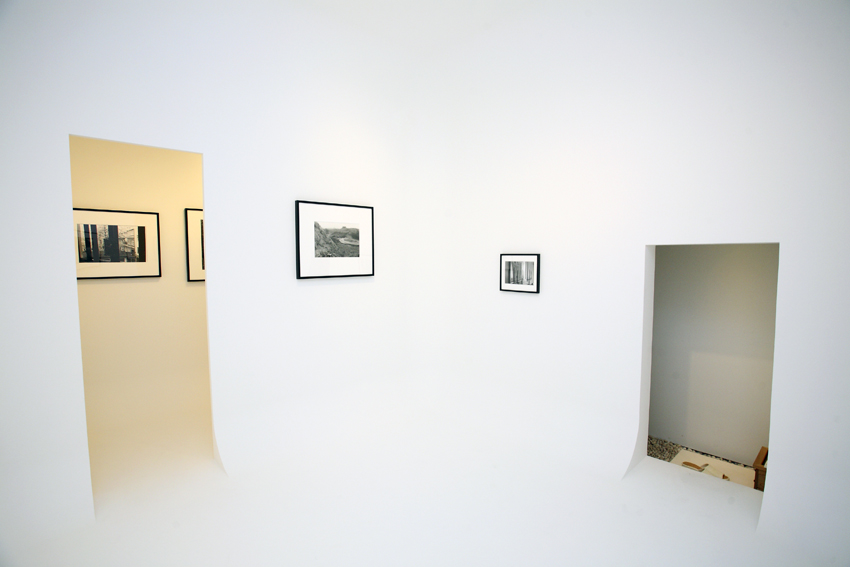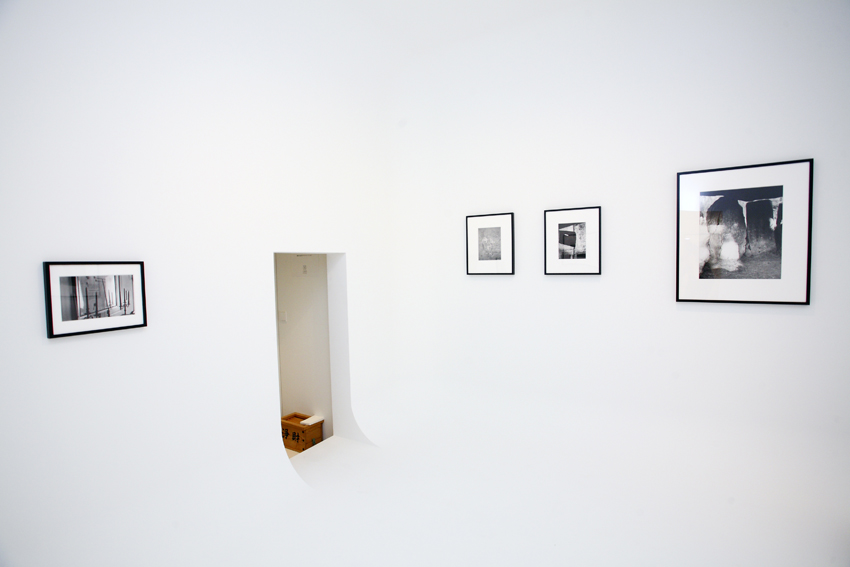Shows
Chihiro Minato’s “Mind the Ma”


Kurenboh - Chohouin Buddhist Temple Gallery, a nonprofit exhibition space run by Taniguchi Akiyoshi—head priest of the Chohouin Pure Land Buddhist Temple that houses the gallery—recently hosted an exhibition of Chihiro Minato’s photography titled “Mind the Ma,” which compliments the philosophy of this unique exhibition space. Akiyoshi describes Kurenboh (literally "empty lotus room") as a meditation gallery. Designed with architect Makoto Yokomizo, the gallery is in a small, purpose-built building on the temple grounds, the dimensions of which are based on a traditional Japanese chashitsu, or tea ceremony room. Here however, in an aesthetic twist, the act of receiving tea has been replaced with the act of viewing photography. For this and other exhibitions, Taniguchi chooses works that suit the Buddhist context. While the art itself may not be directly inspired by religion, the works have been chosen based on their potential to be understood from a Buddhist perspective.
Visitors enter by opening a small sliding door, about half the height of an adult, which they have to duck to get through. Only two or three people can enter the narrow, white corridor at any one time. The corridor, lined with loose white stones, leads visitors to the first chamber, which featured five framed, black-and-white photographs. In the next room, seven additional photos were on display. The rooms are distinguished by their lack of sharp angles—all corners have been rounded in Yokomizo's emblematic style. This gives the space a sense of infinity, strangely lacking definitive dimensions. Everything is whiteness and silence, directing attention toward the artwork on the walls.
Inspired by the space itself, Minato selected photographs he had taken at various times during the past two decades. His works are delicately handled images with a slightly mysterious mood cultivated by his use of soft-focus corners, shadows, and other manual "imperfections." They were not from any single series, but have in common the suggestion of travel. Many of the works' titles reveal they were taken in locations across Europe. Some, such as Battlefield in Rain, Boucaut, France (1986), also indicate that these sites hold historical significance. Nevertheless, the images themselves contain few striking details. Rather, photographs of a nondescript cave, a moldy wall, or the candles above a mantelpiece, become focal points for contemplation because of Kurenboh’s otherwise empty, white space.


The exhibition title, “Mind the Ma,” comes from the frequently heard announcement to “mind the gap,” on the London Underground, but Minato keeps the Japanese word ma untranslated because the character for ma (gap) is a concept with deep importance to Buddhism. Following this explanation in the exhibition notes, the artist launches into musings on the spiritual life of photographs as consituting a gap that has split off into its own realm. In an email interview about the exhibition, Minato explained: “Little by little these images came to mind. It is like I took these pictures for [a] second time in my mind. The Ma rendered these images—which were taken once a long time ago—just for its own sake. It may sound strange but my feeling is, I did not select but these pictures selected themselves.”
Speaking with ArtAsiaPacific, Kurenboh’s director, Taniguchi, expressed his belief that this heightened experience with art can resemble the methods of those who seek enlightenment through Buddhist meditation. Indeed, upon exiting the gallery space, the antechamber acts as a passageway in which visitors prepare to emerge into the daylight of the mundane world once more. In Buddhist terms, such architectural spaces are a way to experience a feeling of rebirth. In Kurenboh’s careful combination of art and meditative contemplation, viewers are revitalized, in one sense, as their expectations of art-viewing are forever changed.







